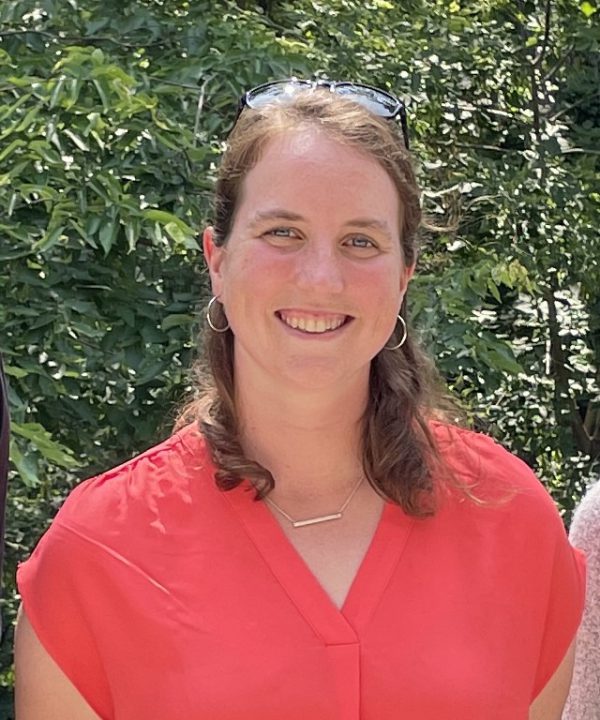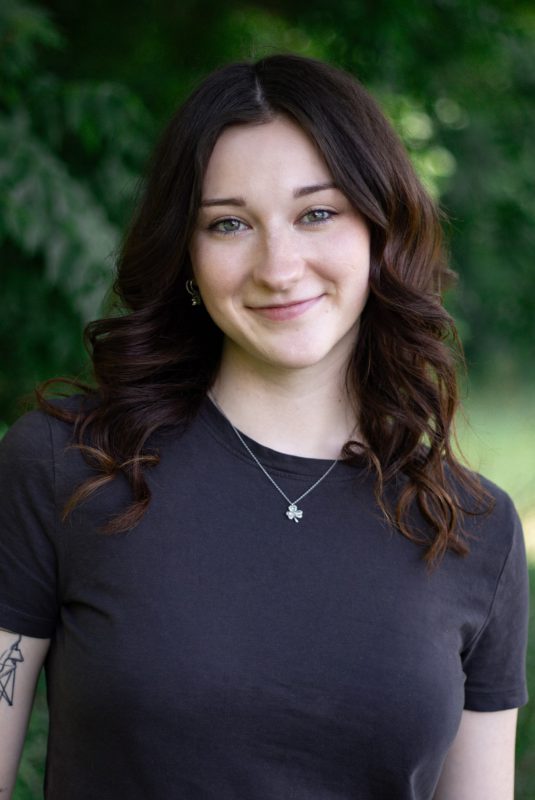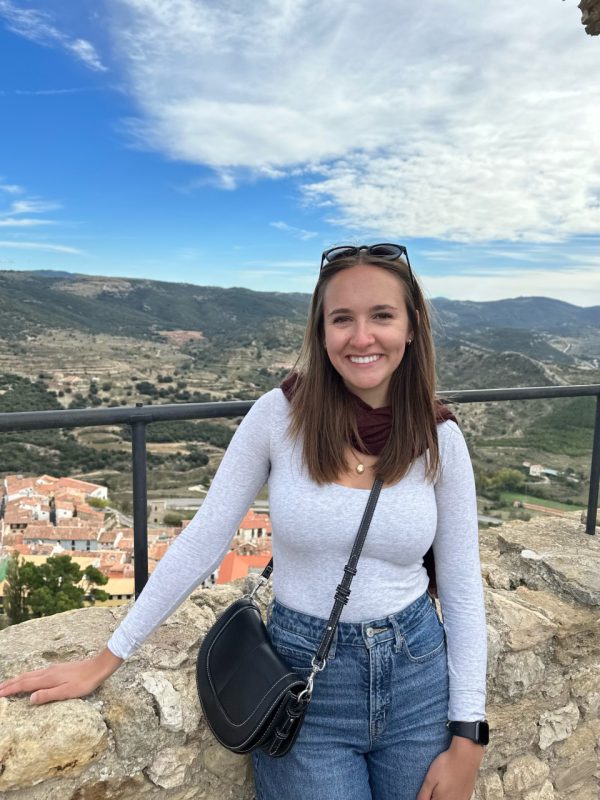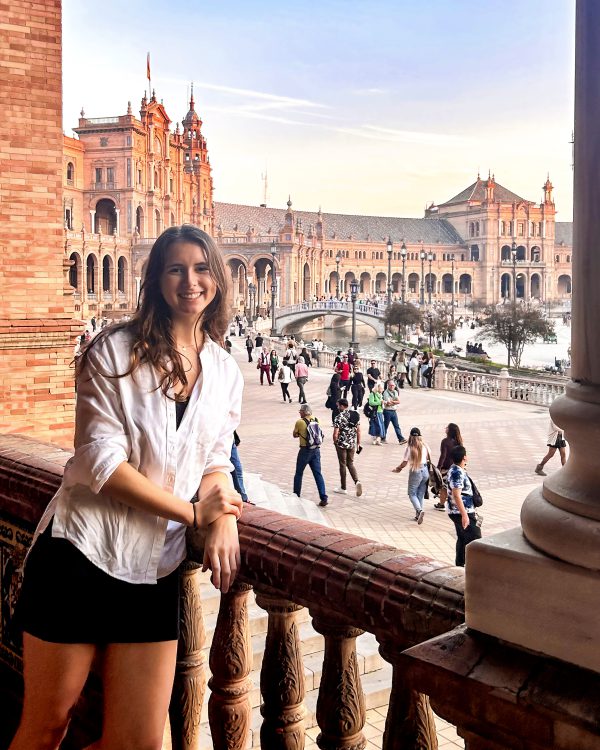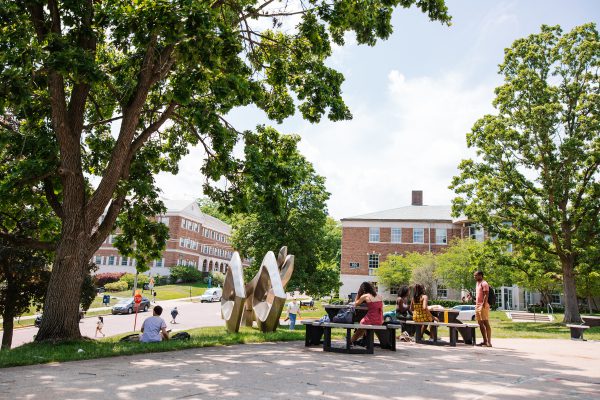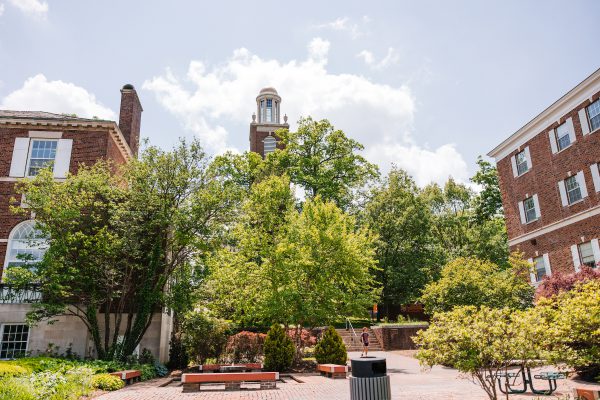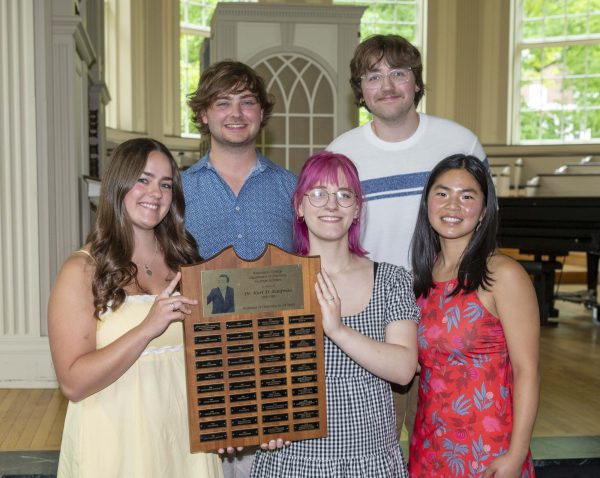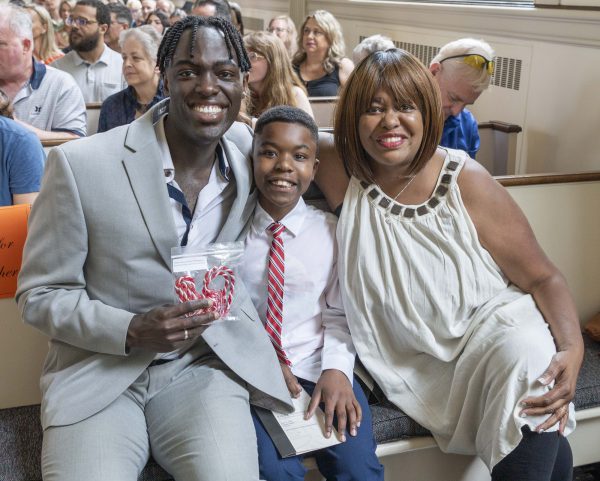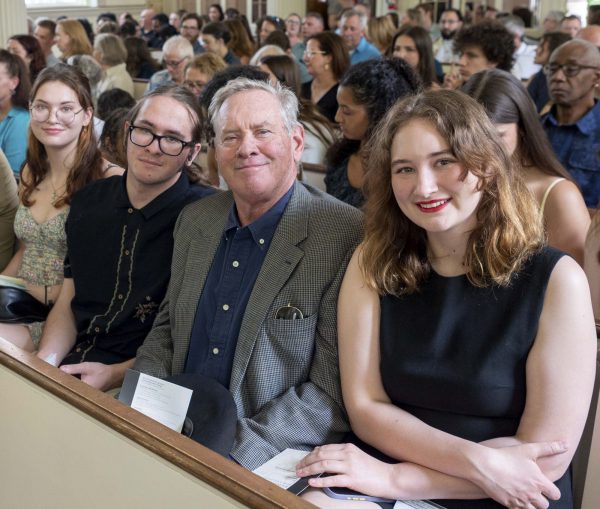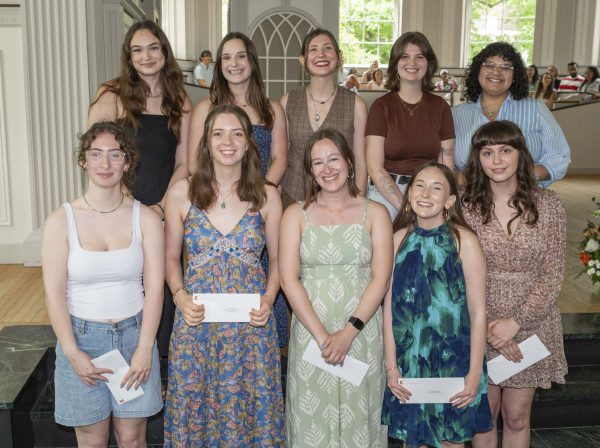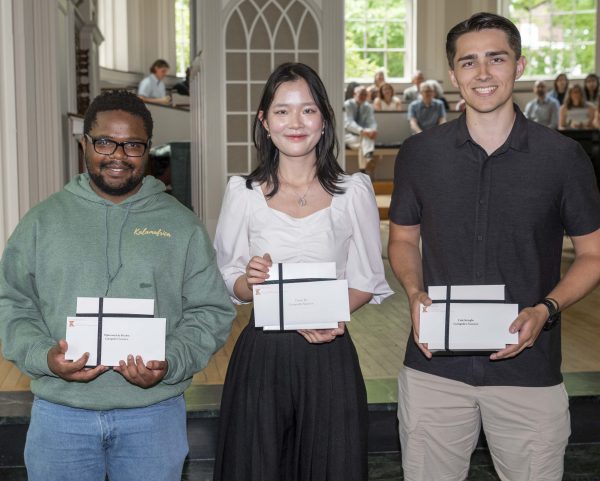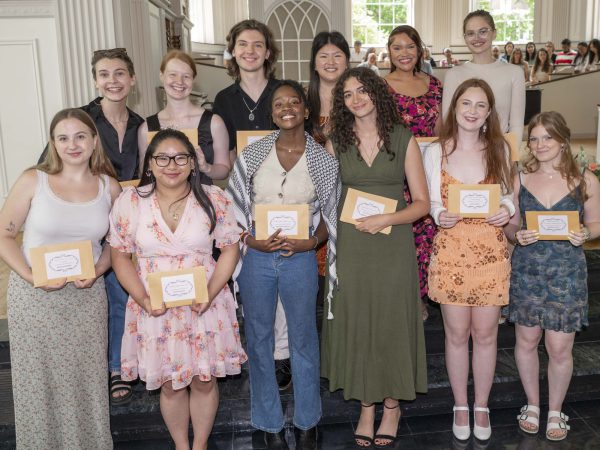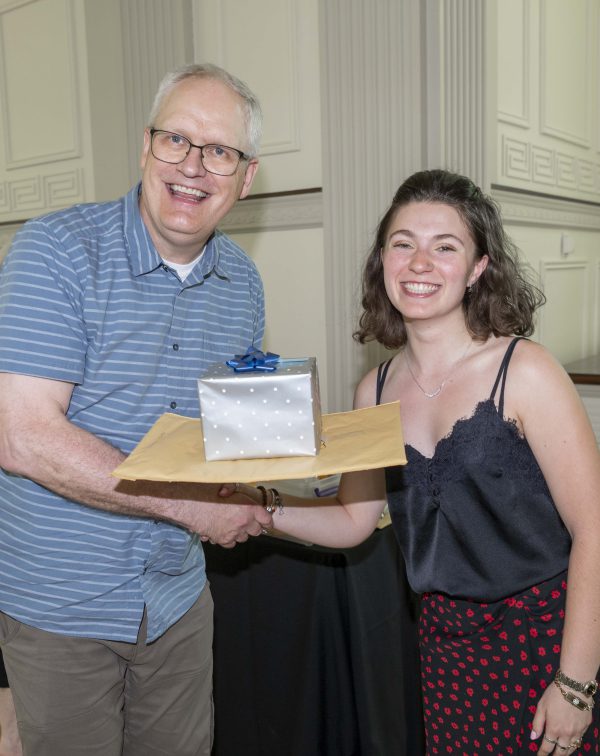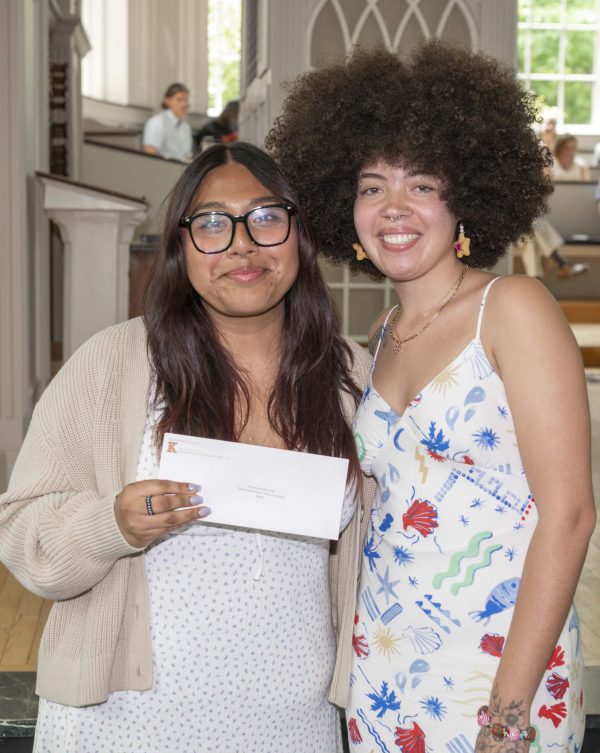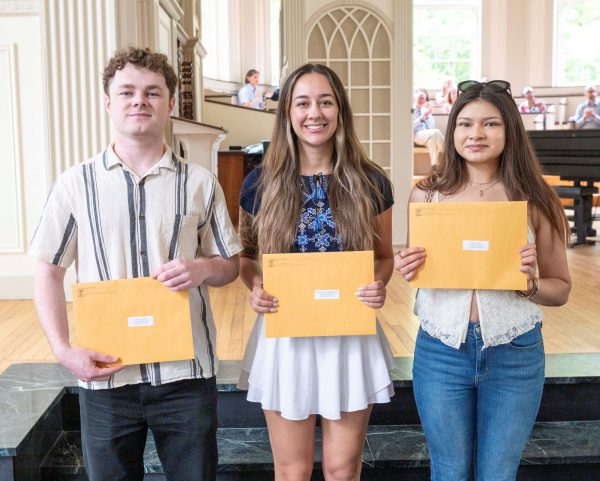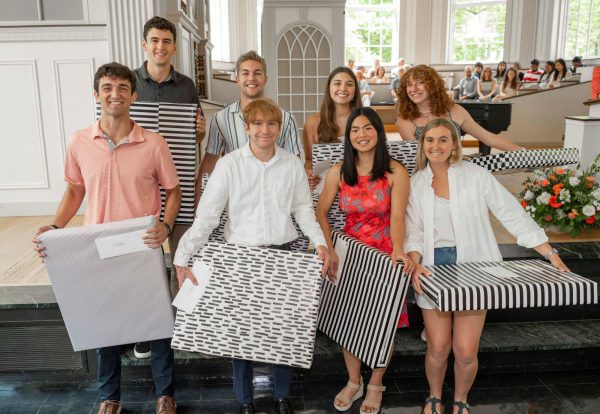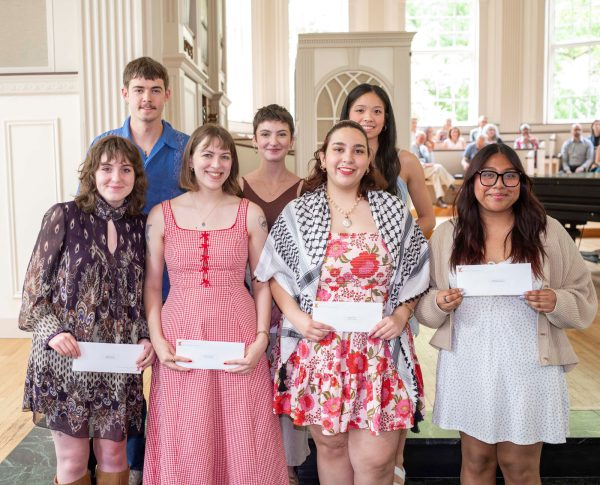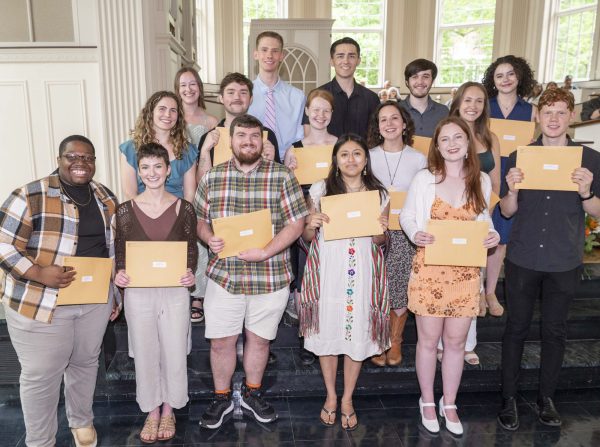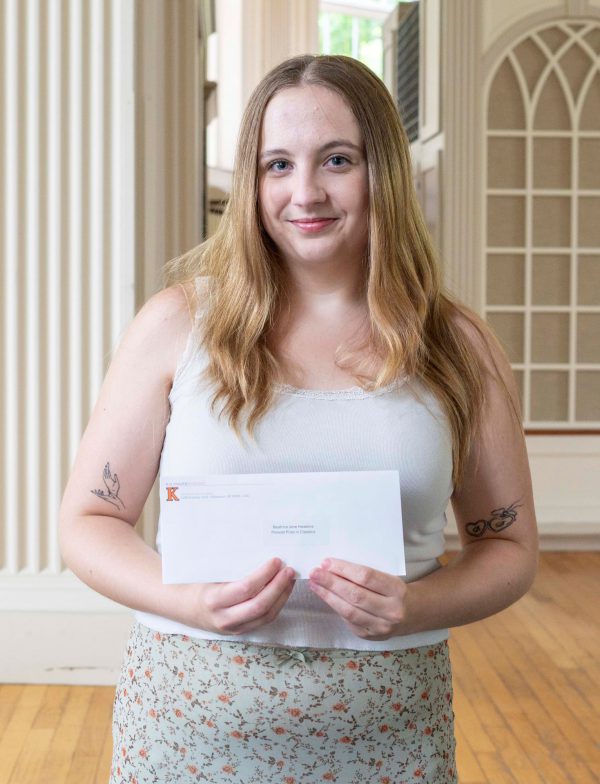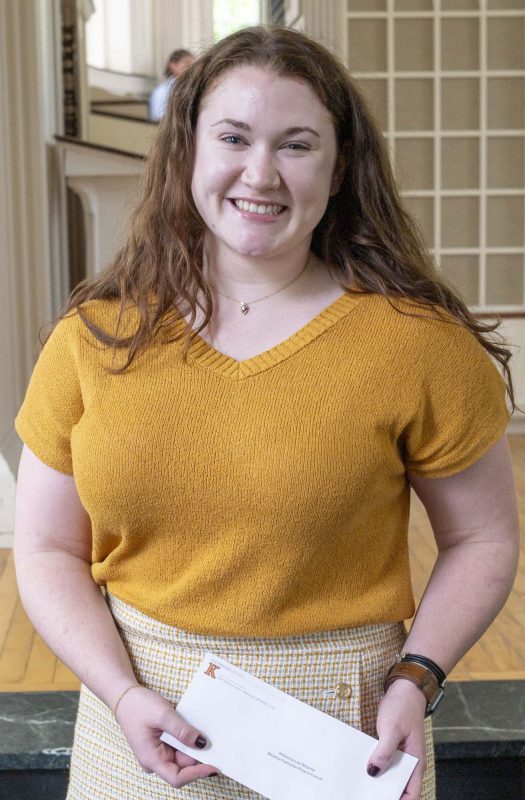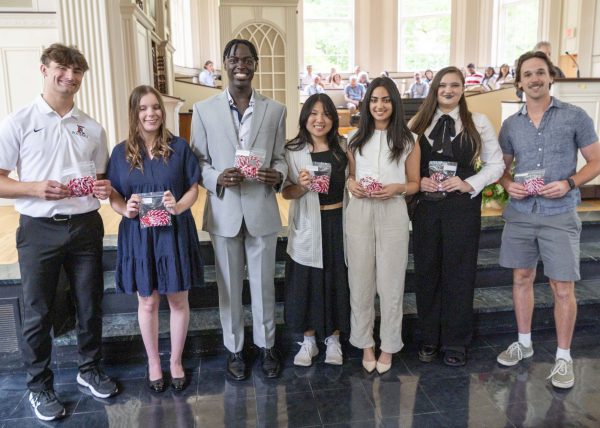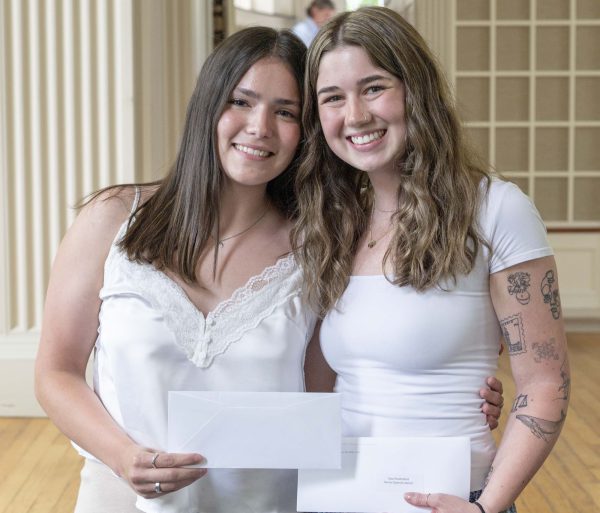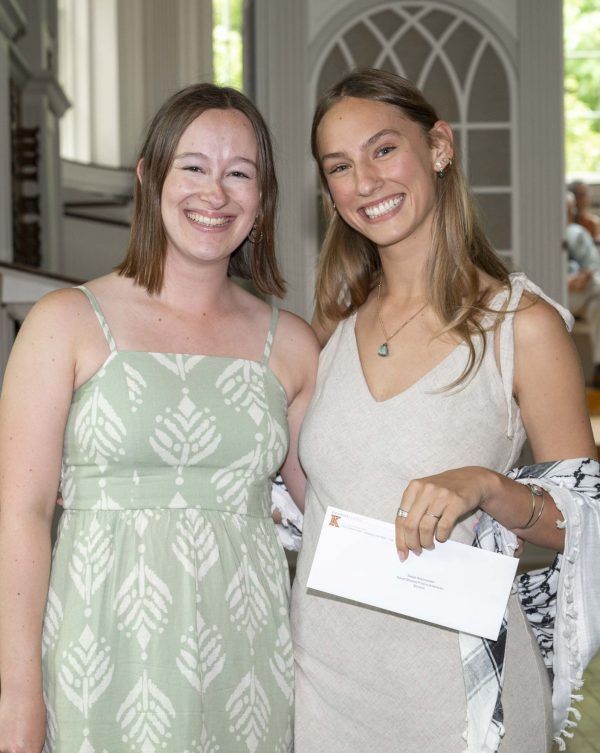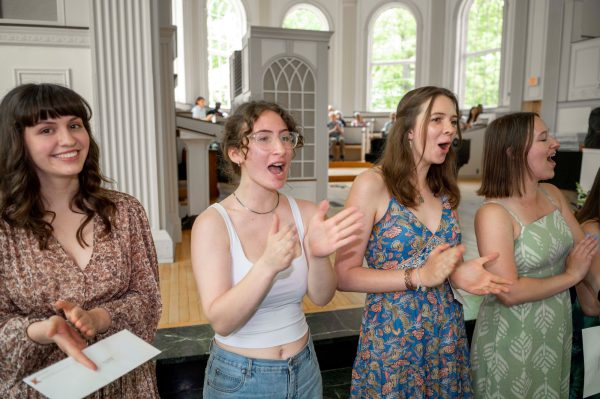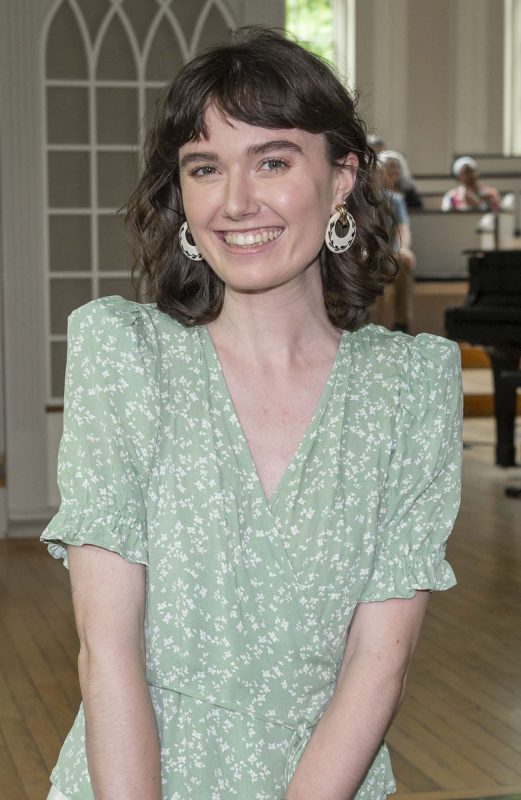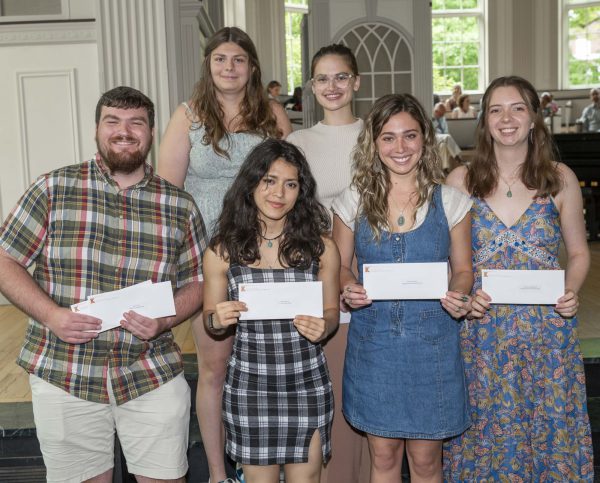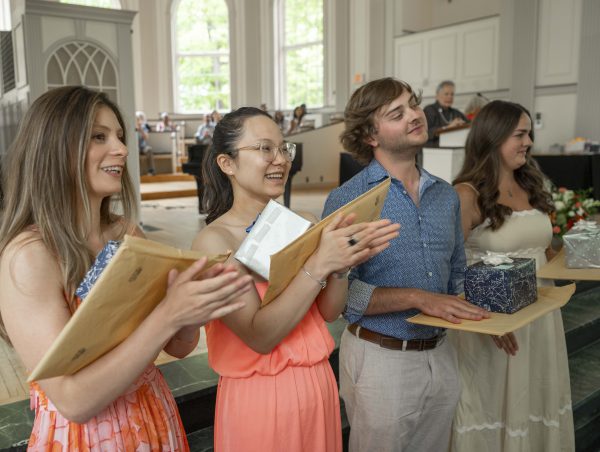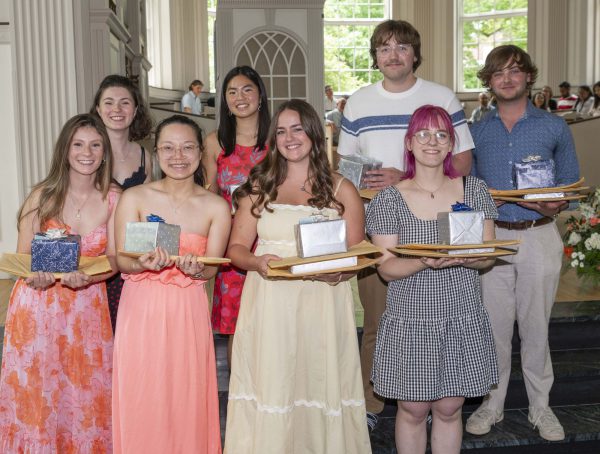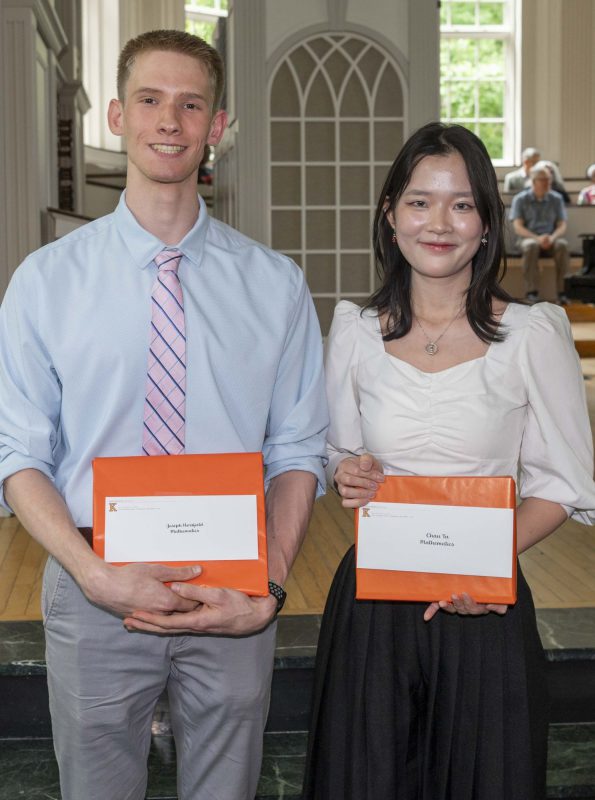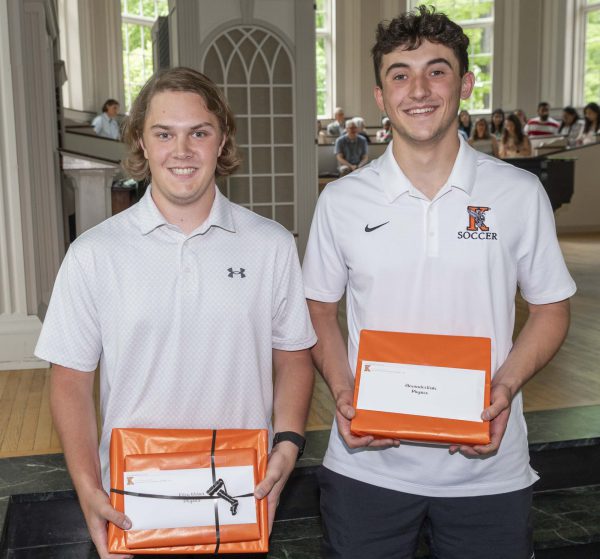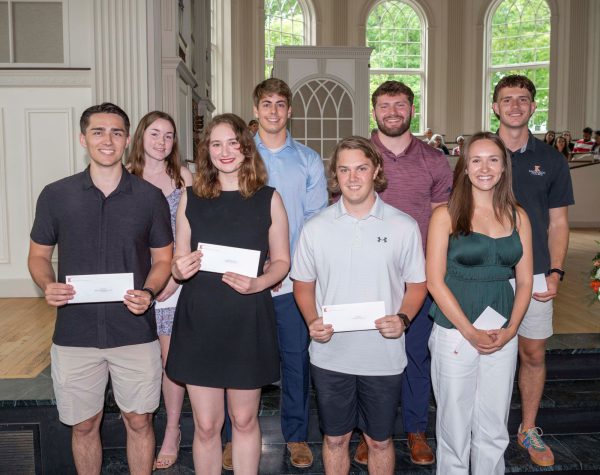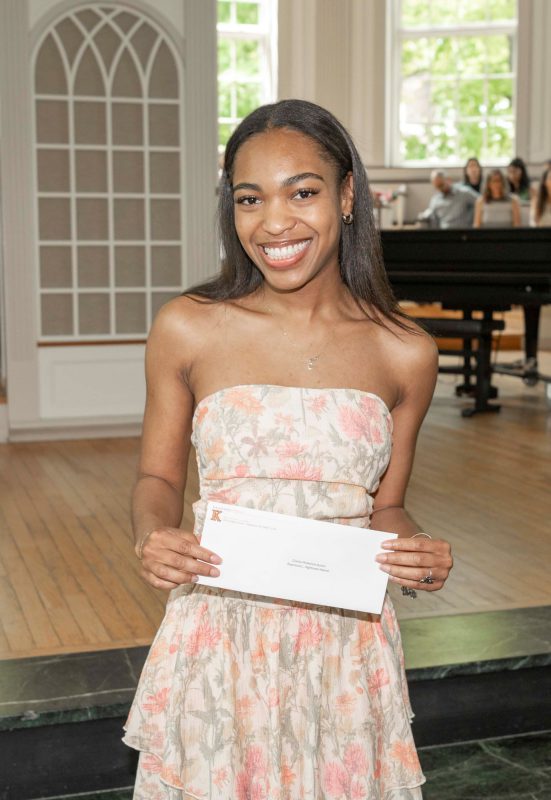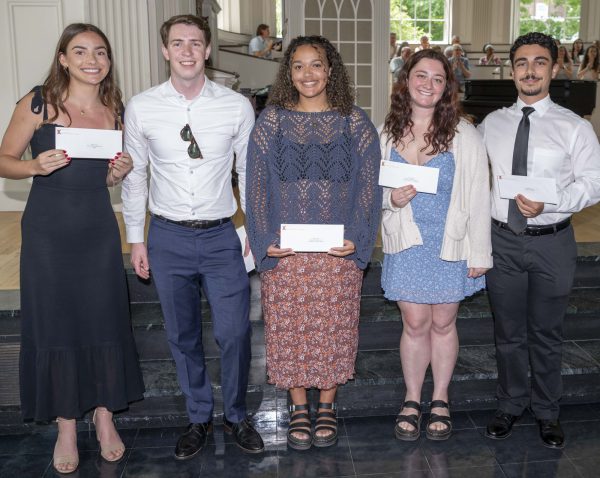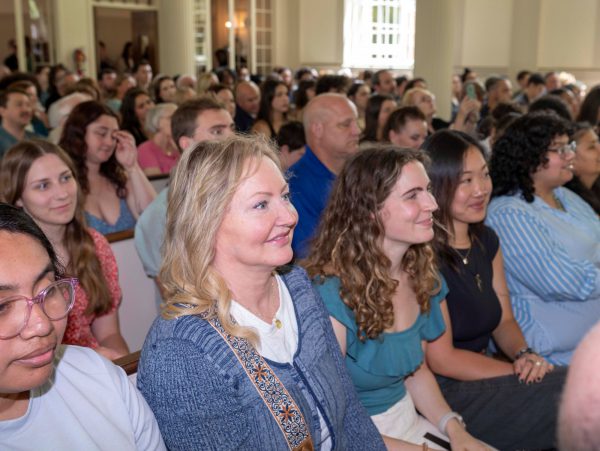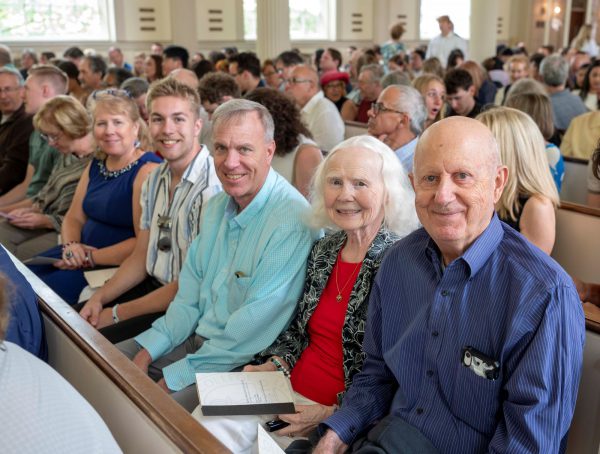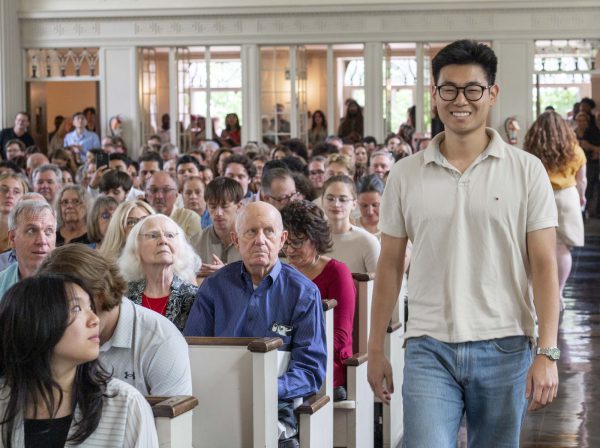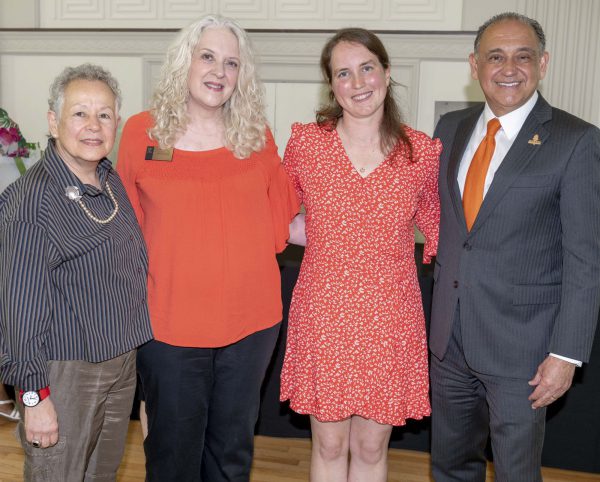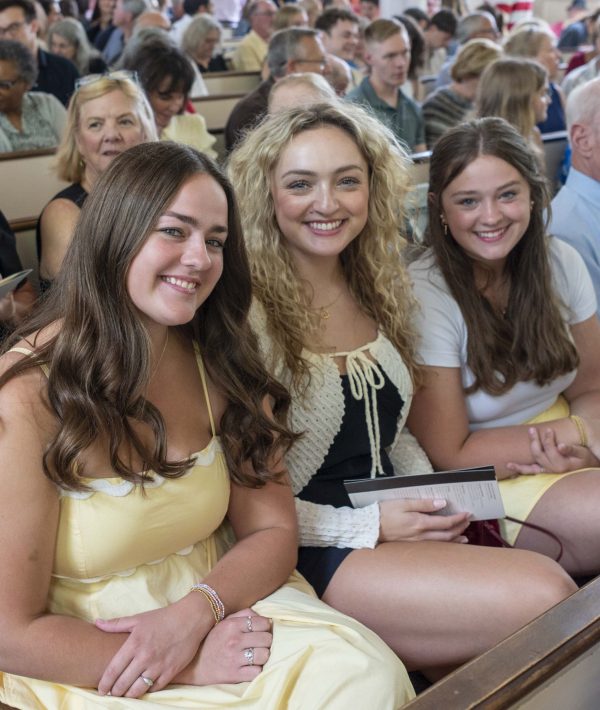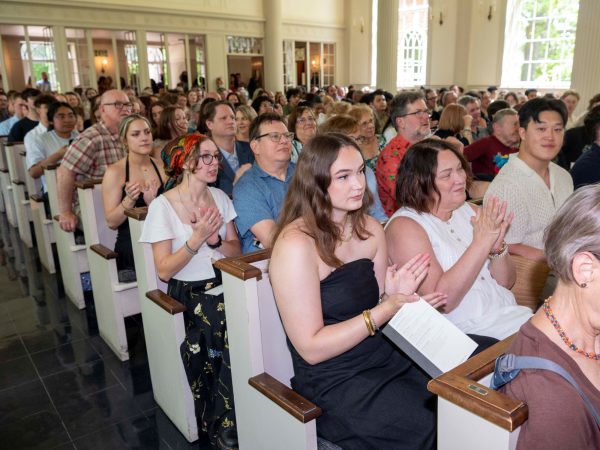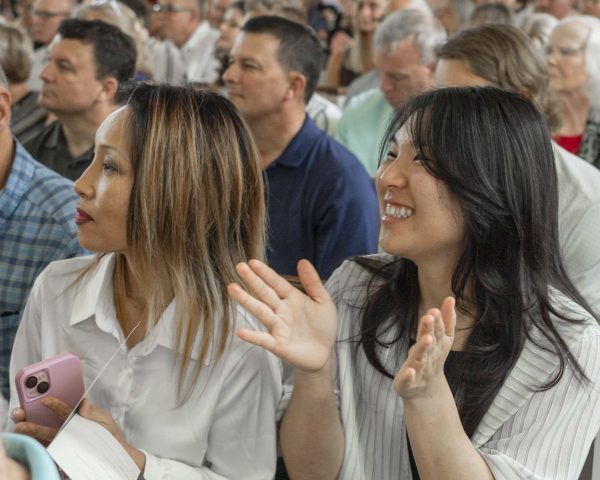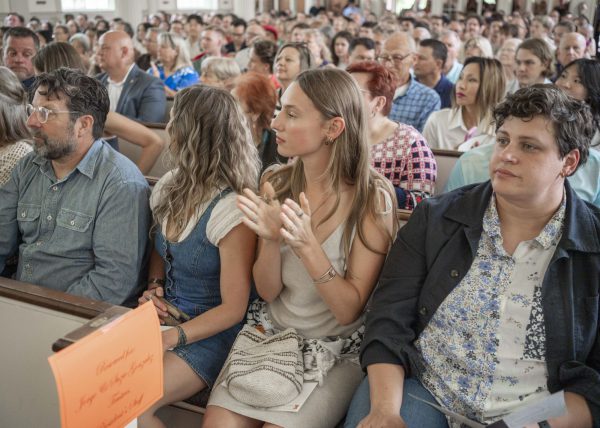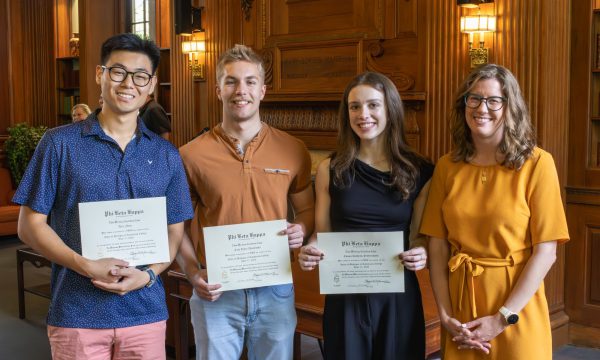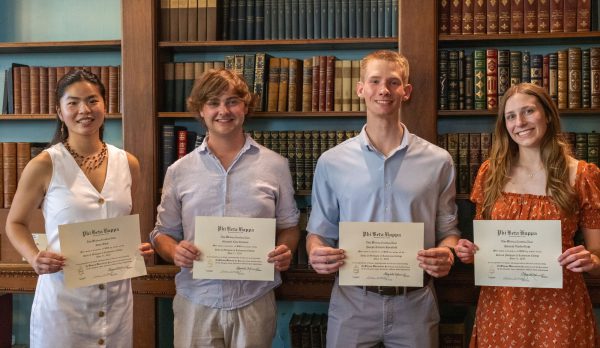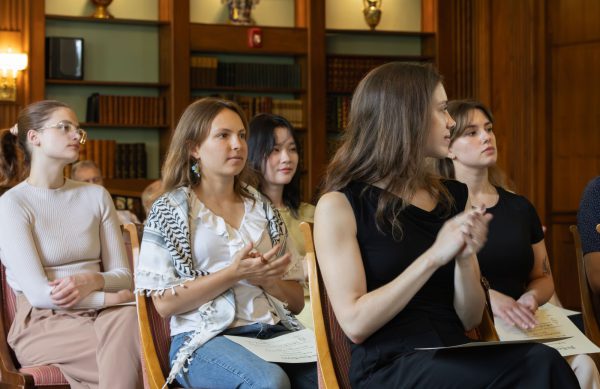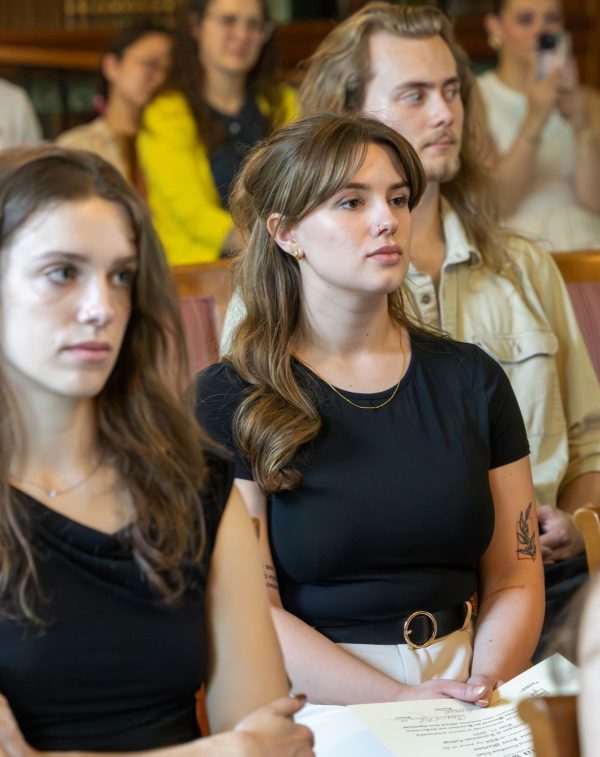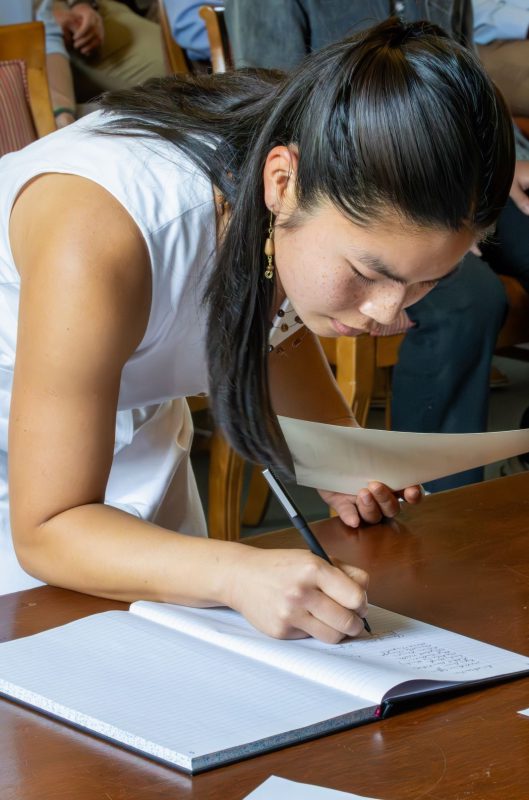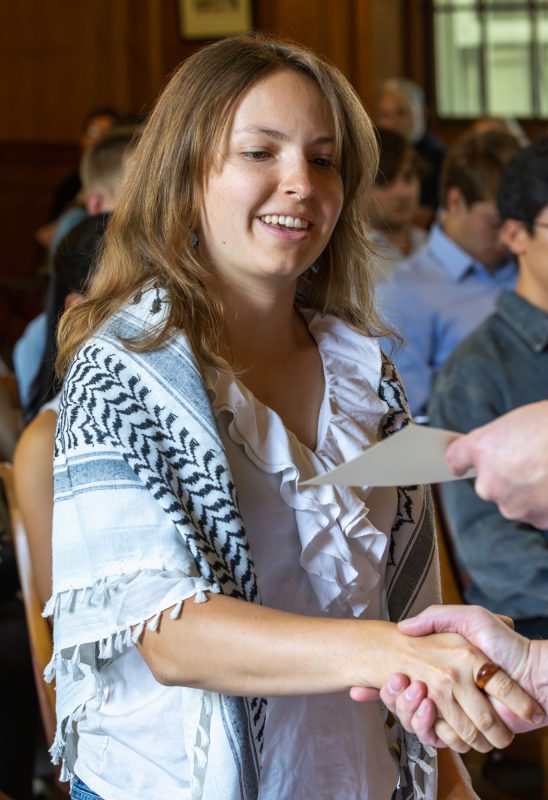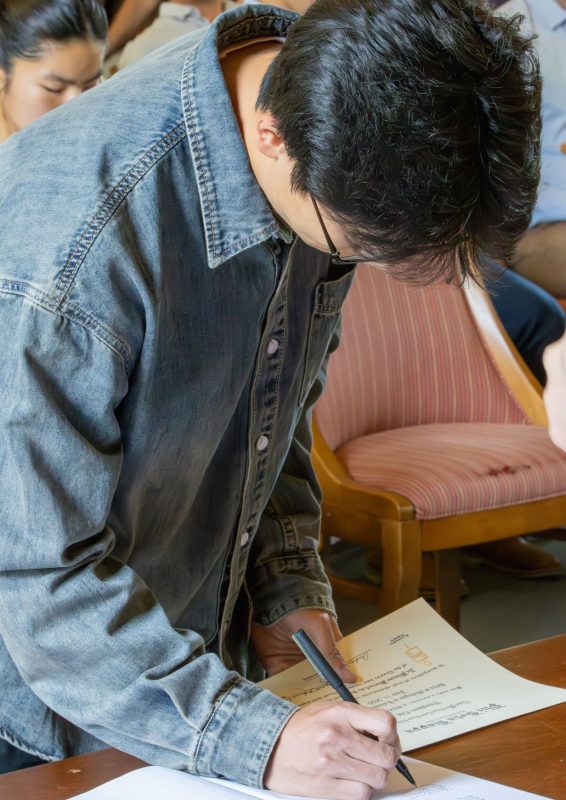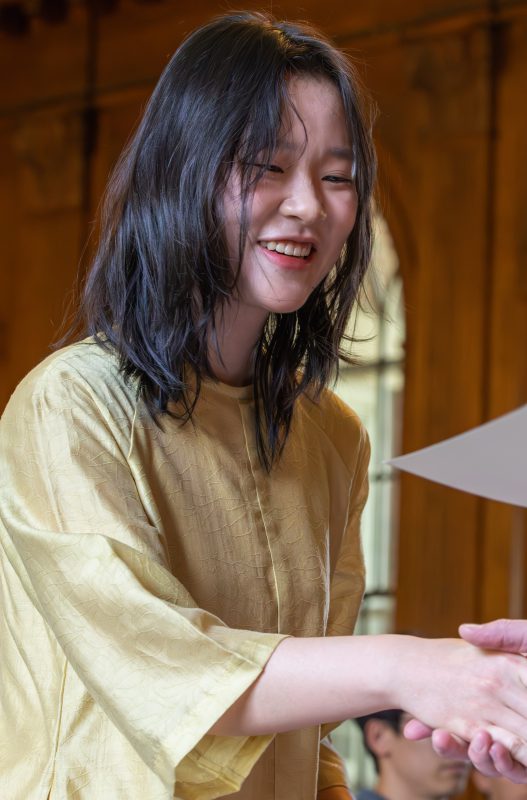Three months before Thomas Bentley ’25 graduated from Kalamazoo College, he secured his full-time dream job. He even started that role remotely while going through his last term, and he since has moved to a new state. But his favorite part of his new pursuits so far might surprise you.
“At the moment, my favorite part is when I take my lunch break,” he said. “I go sit on the balcony of the fourth floor and I eat my lunch overlooking a Major League Baseball field. That experience is tough to beat.”
The field Bentley observes is Target Field in Minneapolis, and since spring break this year, he has served the Minnesota Twins as an analyst in the Pro Personnel Department of Baseball Operations. He joins alumni such as Jordan Wiley ’19 and Samantha Moss ’23 by working in Major League Baseball roles within two years of Commencement. Another young alum, Jack Clark ’17, is the manager of MLB draft operations and has worked in professional baseball since 2020. And like theirs, Bentley’s position is ideal for someone who has been a baseball fan since childhood.
“I’m grateful that I found a job in the sport that I always wanted to be a part of in some capacity or another,” he said. “I think a lot of people would think it’s a cool job and that’s definitely not lost on me. That’s a piece of the gratitude that I weigh in terms of how things have turned out.”

If you’re familiar with the 2011 movie Moneyball, starring Brad Pitt and Jonah Hill, you might have a ballpark idea of what Bentley is doing for the Twins. Although Hill’s character is fictional, he represents an amalgamation of everyone who serves a Major League Baseball team in pro personnel. Bentley performs similar work by evaluating statistics to determine how the Twins might improve their organization by making trades with other teams. As a result, if the Twins pull a deal at or before the July 31 trade deadline this year, it’s possible that his work will have influenced it.
“It’s like I’m doing homework all the time for a test that I might or might not have with the trade deadline coming up,” Bentley said. “Obviously, some of that homework will come into play, but my job is to understand Major League Baseball prospects really well and go to a meeting with pre-existing knowledge on those players.”
Bentley grew up in White Lake, Michigan, where K baseball coach Mike Ott recruited him as a pitcher. As a student, he was familiar with K’s academic reputation, making it an easy choice for his education and athletics goals.
Late in high school, however, Bentley faced a problem that came out of left field when he experienced what athletes sometimes call a dead arm. The condition would sound ominous for anyone, but it’s especially concerning for a baseball pitcher who might lose much of his velocity and control as a result of the problem.
A dead arm can be indicative of any one of many issues. For Bentley, it was a sign of a torn ulnar collateral ligament (UCL) in his right elbow, an injury that requires Tommy John surgery. With the procedure, named after the pitcher who was one of its early successes in 1974, a surgeon grafts and attaches a ligament from a different part of the patient’s body or a cadaver to replace the UCL.
After a year of treatment and recovery, patients usually can return to their sports. Bentley, though, while attempting his recovery, had a couple of setbacks, and his elbow never fully healed. That curveball meant he would lose his entire senior season in high school, and his college baseball career ended before it even began.
Thankfully, Bentley kept his eye on the ball and K remained his destination for college as it led him toward a series of opportunities and a job, starting with Ott allowing him to be a director of data analytics for the Hornets.
“Coach Ott gave me a lot of freedom to test my ideas and let me use the baseball team as a sandbox of sorts,” Bentley said. “I was doing a bunch of projects for them, managing some systems for them on an ad hoc basis, and I learned how to create reports. They weren’t very good at the time, but it was a good starting point for me.”
Bentley said he wasn’t the best student for his first year and a half at K. In fact, he had hoped to declare a physics major during his sophomore year, but his grades cost him that opportunity. Regardless, he found a home in the economics department when its faculty went to bat for him.
“When I transitioned into economics, the department was awesome, and all the professors there were super welcoming and helpful,” Bentley said. “I have nothing but good things to say about them. They helped me rehabilitate my academics. [Associate Professor of Economics Julia] Cartwright especially pushed me, harder than I think most professors did, to pull my stuff together and be a good student.”
Bentley didn’t study abroad largely because he garnered an internship with Driveline Baseball, a data-driven player-development organization in Seattle. He also obtained on-campus work with the Center for Career and Professional Development (CCPD) as a career advisor, a job that helped him develop his own skills while assisting his peers.
“That career-advisor job was something I didn’t think I was going to like, but I wanted to get an on-campus job, and I ended up loving it,” Bentley said. “My bosses and co-workers there were great, and I learned more about my own career than I thought I was going to. I greatly improved my career-finding skills while working in that department.”
These combined educational experiences wound up making his high school injury feel like a blessing in disguise.
“My parents and I sometimes talk about the UCL tear because it seems like it might have been the best thing that ever happened to me,” Bentley said. “Realistically, the Tommy John surgery is a big reason why I got a great job with the Minnesota Twins. All the pieces kind of came together.”
And since, from the drive to work on a Monday through his last duties on a Friday, Bentley has relished his opportunities with the Twins. Entering the All-Star Break, Minnesota sits in second place in the American League Central, making the team one to watch—possibly as a buyer or a seller—in the trade market, so think of Bentley if they make a deal.
“Admittedly, I try to understate how cool I think my job is most of the time,” he said. “But coming into work every day has been really exciting. The drive is pretty standard, until I’m right outside the stadium. When I park and use my ID to get into a Major League Baseball stadium, that’s when it clicks: I was hoping I would one day work in baseball and I’m already doing exactly that. It’s a surreal feeling because I was a high-schooler just four years ago, setting this exact goal. It’s an amazing experience.”

